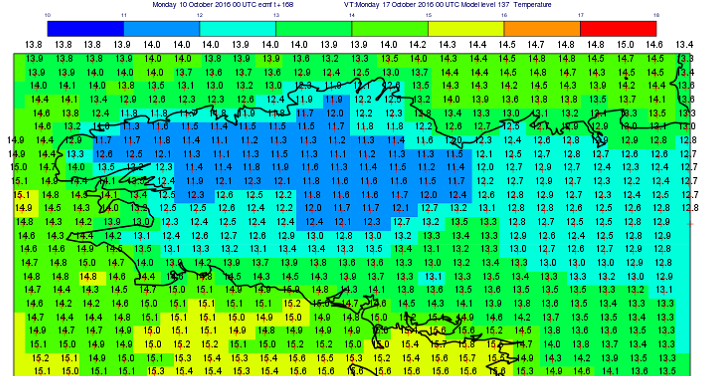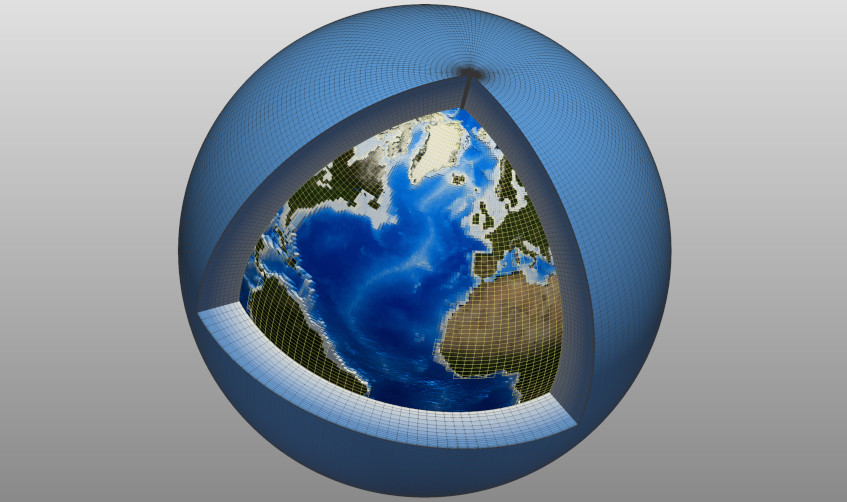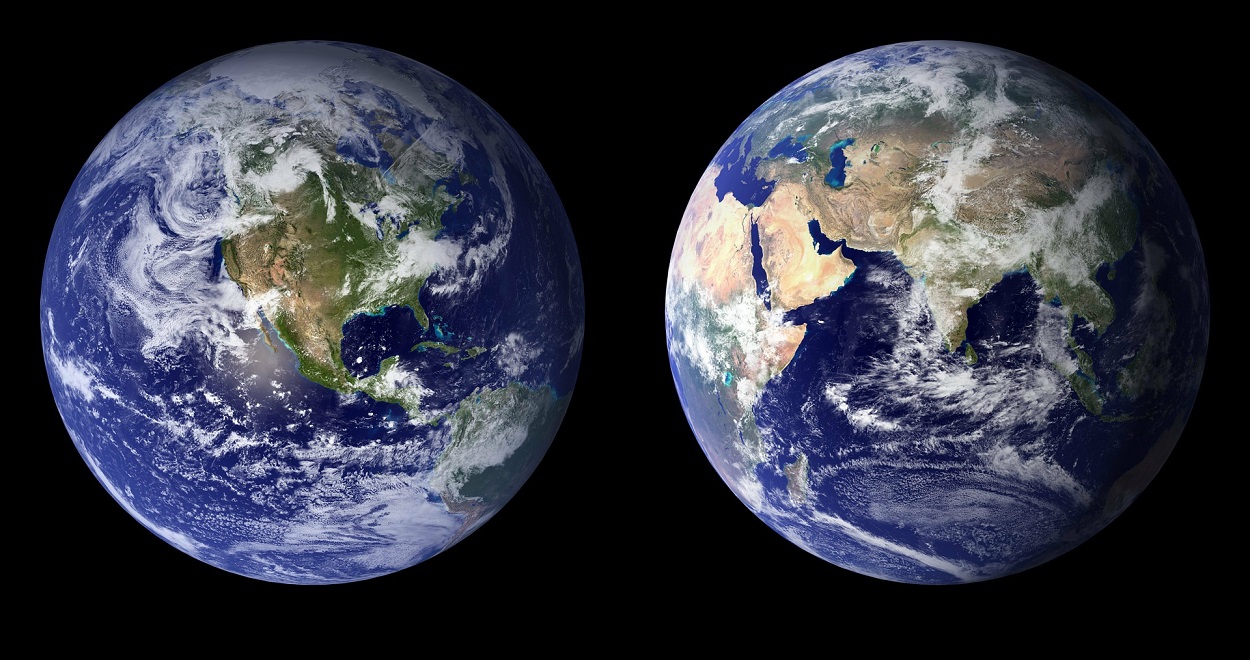Artificial intelligence for weather forecasting
PDF
Artificial intelligence (AI), and in particular deep learning methods using neural networks, has been successfully exploited in numerous applications in recent years. Weather forecasting is one of the promising fields of application, with potentially numerous uses of AI that could lead to major methodological advances, associated with significant gains in performance and quality. Through some initial achievements, this article presents the potential of AI for the different stages of weather forecasting, from its calculation to its practical utilization and communication. The new issues and challenges posed using these techniques are also discussed.
1. What is Artificial Intelligence all about?
Precisely defining artificial intelligence is a first difficulty. In the following, we will consider that it is a vast set of techniques, based on mathematical foundations and computational sciences, whose objective is to reproduce some aspects of human intelligence (reasoning, creativity, for example). Far from being new, AI appeared in the 1950s, first in the form of expert systems: humans establish a set of rules and instructions that the machine executes. The AI methods that are among the most widely used and efficient today follow a completely different approach: humans no longer prescribe rules but develop computer programs capable of learning the best relationships from the data. This is called machine learning, whose algorithmic structure is essentially based on deep neural networks.

Formal neural networks were proposed as early as the 1940s but were relatively little exploited until the 2000s. It is the increase in computing power, and in particular the arrival of graphics processing units (GPUs), as well as the availability of massive datasets, that have enabled these approaches to make a strong comeback since the 2010s.
In the remainder of this article, the term AI will mainly be used to refer to methods using deep neural networks. Convolutional neural networks, introduced by Le Cun et al. [1], and specifically designed to process input images, are one of the main techniques applied to weather forecasting.
2. AI for weather forecasting
Weather forecasting is the result of a sequence of complex steps, the central element of which is the forecasting model (see Weather forecasting models). Meteorological services regularly propose changes to the model to improve the quality of forecasts. In particular, it is common to increase the resolutions of computing grids and to make the representation of physical processes more complex. However, in both cases, these are costly upgrades, in development and especially in computing resources. AI algorithms, on the other hand, have the advantage of being extremely fast in their inference phase. Thus, the solution of a complex physical problem by AI is generally several orders of magnitude lower than classical approaches, which often require solving several hundred or even thousands of equations. This makes AI a potentially interesting tool for speeding up the calculation of forecasts, among other things.
The use of AI in meteorology is not new. As early as the 1990s, AI techniques enabled innovative developments in the statistical post-processing of weather forecasts. For example, various applications have been developed to reduce systematic errors in forecasts [2]. However, it is only recently that the use of AI has expanded into the core of atmospheric modelling.
2.1 Physical and AI models: what are the differences?
Physical models, of which currently operational weather forecasting models are an example, are built based on expert knowledge of the functioning of the system under study (the atmosphere, in the case of weather), most often translated into equations. These models have the advantage of being physically interpretable, but they remain approximations of the real system, limited by our understanding of the processes at play and by the constraints imposed by the computational resources.

Let’s take the example of the temperature forecast at a due time. Its calculation with a physical model amounts to solving well-known equations prescribed by humans, while its calculation with an AI model consists of applying a sequence of statistical relationships learned by a neural network from the data during the training phase. Physical modelling and ‘AI’ modelling are therefore two very different approaches in their foundation, but also complementary, to solve a given problem (Figure 2).
2.2 Towards a hybridization of physical and AI approaches for atmospheric modelling
As illustrated in Figure 2, AI can be integrated into the forecasting process in various ways. The complementary nature of the physical and AI approaches initially motivated the development of ‘hybrid’ forecasting systems, combining physical modelling and AI. This involves, for example, replacing the most expensive or least well-represented elements of a physical model with an AI algorithm. Other work has explored the possibility of using AI to improve certain characteristics of forecasts (e.g. the accuracy of spatial sampling), and ultimately their quality, at lower cost. Several examples of hybrid forecasts are presented below.
Physical parameterizations, which simulate the effects of fine-scale processes such as radiation, convection, or turbulence, are currently among the most expensive components of a model, as well as one of the main sources of uncertainty in weather (and climate) forecasts. Several studies have begun to examine the possibility of replacing all or part of these parameterizations with AI algorithms, with promising initial results [3]. The example in Figure 3 shows a very good consistency between the precipitation forecast by a physical model and by a hybrid model, in which the processes associated with deep convection are learned by a neural network.


2.3 Towards atmospheric models entirely based on AI
Previous examples have shown how AI can complement physical weather forecasting systems to improve computational performance and quality. A new step has recently been taken passed by several research teams, who have proposed to completely replace the physical prediction model with an AI model. In 2022 and 2023, a succession of studies tackles the problem of global medium-range weather forecasting by AI [6]. Against all expectation, AI models such as Pangu-Weather or GraphCast, trained on more than 40 years of historical data, now compete in some aspects with the physical model of the European Centre for Medium-Range Weather Forecasting (ECMWF), considered to be the best operational forecasting model at the moment. The daily forecasts of these new models were soon released publicly, and interested readers can view them at https://www.meteociel.fr/modeles/ecmwf_aifs.php and https://charts.ecmwf.int/.
Although these AI models still provide a very partial representation of the atmosphere, far from that produced by physical models, and with well-identified weaknesses, it has been demonstrated that it is possible to predict some of the meteorological parameters, with a certain quality (Figure 5). These new models are also capable of anticipating high-impact events such as storms [7] or tropical cyclones several days in advance.
An undeniable advantage of AI models is their efficiency in terms of computing cost when used for inference. Forecasts can be produced several days ahead in a matter of seconds or minutes, much faster than physical forecasting models, which take tens of minutes or more. These first AI models thus open a new field of research with a long list of scientific and technical questions, and new opportunities for operational forecasting.

3. AI for expertise and prediction communication
3.1 AI and forecasters
Weather forecasts, whether produced by a physical model or an AI model, require human expertise to produce bulletins, warnings, or assistance to different sectors of activity (see The role of the forecaster). Operational production tends to evolve towards an increase in the information made available to users, with forecasts refreshed more frequently and carried out in the form of ensembles. As a result, the amount of data to be assessed is constantly increasing, often within very tight timescales.
AI offers new opportunities to facilitate human expertise in operational forecasting. Its capabilities for pattern recognition and automatic classification can be leveraged to extract and summarize relevant information from large volumes of forecast or observation data. Two examples of application are presented below.


3.2 AI and weather forecast communication
While AI is a tool that can be integrated throughout the forecasting chain, from modelling to expertise, both human and automatic, it could also change the way in which forecasts are communicated or accessed by users. AI, in more or less sophisticated forms, is already used in certain automatic productions that power mobile applications, for example. The new conversational AI tools also offer a new means of accessing weather information, enabling the user’s request to be formulated explicitly (Figure 8). Could AI go so far as to replace weather presenters? A first response was recently provided by Switzerland (Figure 9). These technologies are still in their infancy, but they could well be the beginnings of a new standard of communication and interaction with users.


4. Messages to remember
- AI methods have been used in various sectors of activity, and weather forecasting is no exception. The availability of large datasets and the increase in computing resources have made it possible to develop high-performance AI algorithms that can be applied to the various stages of the operational weather forecasting chain. While most of these developments are still at the research stage, their operational use now seems conceivable in the short to medium term.
- The most unexpected and potentially most impactful element is the advent of weather forecasting models based entirely on AI. While the incremental development of numerical weather prediction since the 1950s is often described as a ‘quiet revolution’, it is a much faster revolution that seems to be taking place with AI. It also opens a new area of research for meteorological services, with new scientific and technical challenges.
- These advances in AI should not, however, hamper improvement of physics-based forecasting models, which are still of vital importance. At this stage, the aim is not to replace one by the other, but rather to exploit the complementary nature of these two approaches.
Notes and references
Cover image. Image created by the author and generated by DALL. E, a generative AI, based on the text description ‘Neural networks for weather forecasting’.
[1] Le Cun, Y., L. Bottou, Y. Bengio, and P. Haffner, 1998: Gradient-based learning applied to document recognition. Proceedings of the IEEE, 86, 2278–2324.
[2] Taillardat, M., A. Fougères, P. Naveau, and O. Mestre, 2019: Forest-Based and Semiparametric Methods for the Postprocessing of Rainfall Ensemble Forecasting. Wea. Forecasting, 34, 617–634, https://doi.org/10.1175/WAF-D-18-0149.1.
[3] Balogh B., 2022. Vers une utilisation de l’Intelligence Artificielle dans un modèle numérique de climat. Thèse de doctorat en Océan, atmosphère, climat. Toulouse INPT.
[4] Doury, A., Somot, S., Gadat, S. et al. Regional climate model emulator based on deep learning: concept and first evaluation of a novel hybrid downscaling approach. Clim Dyn 60, 1751–1779 (2023). https://doi.org/10.1007/s00382-022-06343-9
[5] Brochet, C., L. Raynaud, N. Thome, M. Plu, and C. Rambour, 2023: Multivariate Emulation of Kilometer-Scale Numerical Weather Predictions with Generative Adversarial Networks: A Proof of Concept. Artif. Intell. Earth Syst., 2, 230006, https://doi.org/10.1175/AIES-D-23-0006.1.
[6] Lguensat, Redouane. Les nouveaux modèles de prévision météorologique basés sur l’intelligence artificielle : opportunité ou menace ?.. La Météorologie, 121, 11-15, 2023. 10.37053/lamétéologue-2023-0030
[7] Pardé, M., L. Raynaud, and A. Mounier, 2024: The medium-term forecast of storm Ciaràn by artificial intelligence. Meteorology.
[8] Mounier, A., L. Raynaud, L. Rottner, M. Plu, P. Arbogast, M. Kreitz, L. Mignan, and B. Touzé, 2022: Detection of Bow Echoes in Kilometer-Scale Forecasts Using a Convolutional Neural Network. Artif. Intell. Earth Syst., 1, e210010, https://doi.org/10.1175/AIES-D-21-0010.1.
The Encyclopedia of the Environment by the Association des Encyclopédies de l'Environnement et de l'Énergie (www.a3e.fr), contractually linked to the University of Grenoble Alpes and Grenoble INP, and sponsored by the French Academy of Sciences.
To cite this article: RAYNAUD Laure (January 5, 2025), Artificial intelligence for weather forecasting, Encyclopedia of the Environment, Accessed January 29, 2025 [online ISSN 2555-0950] url : https://www.encyclopedie-environnement.org/en/air-en/artificial-intelligence-and-weather-forecasting/.
The articles in the Encyclopedia of the Environment are made available under the terms of the Creative Commons BY-NC-SA license, which authorizes reproduction subject to: citing the source, not making commercial use of them, sharing identical initial conditions, reproducing at each reuse or distribution the mention of this Creative Commons BY-NC-SA license.







